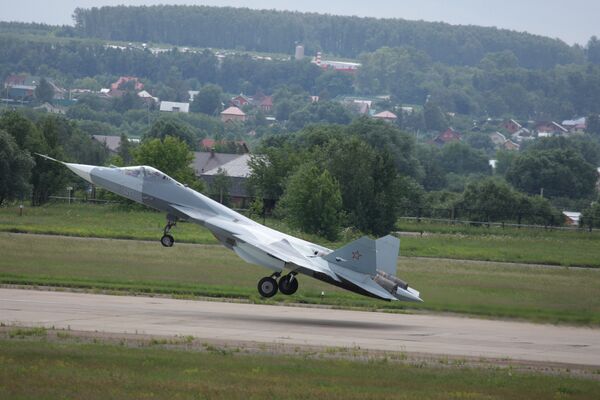The joint development of a fifth generation fighter aircraft has moved to the fore of Russian-Indian cooperation. The issue was discussed during Russian Defense Minister Anatoly Serdyukov's recent visit to India. But an important question remains: Which fifth generation fighter are we taking about? The first prototype of the T-50 aircraft built under the PAK FA project is already flying in Russia.
Fifth generation fighters are increasingly becoming a symbol proving that a country has an independent aviation industry, capable of developing combat aircraft. Only two countries have done this so far - the United States has built its F-22 Raptor and is testing the F-35, while Russia is testing its T-50 fighter. India, which is actively developing its aviation industry, also seeks to develop a fifth generation fighter aircraft, but it cannot start from scratch. Cooperation with Russia is critical to India in this respect. In turn, Russia needs financial support to finish work on its fifth generation fighter.
Many experts see the T-50 as a very promising program that could become the foundation for a whole new family of combat aircraft, like the T-10 Sukhoi aircraft, which led to the Sukhoi Su-27 (NATO reporting name Flanker) and its various modifications.
Cost is the key difference between the T-50 fighter and the American F-22, the world's first fifth generation mass-produced combat fighter. The F-22 is far too expensive to become a popular model, and it suffers from the inevitable technical problems of a pioneer. This in addition to the congressional ban on exporting the fighter has made it impossible for the United States to further develop this system.
The second next-generation American fighter, the F-35, is currently undergoing tests. But the United States has run into problems with this program, too. The United States tried to build a cheaper fifth generation aircraft with the same capabilities as the F-22 but on a smaller scale. The new fighter was supposed to have a smaller combat load and range, slower flight speed and lower radar capabilities. However, combining all these features in one aircraft proved too difficult. Its price tag has surpassed $150 million, which is more than double the initial estimate. There is no indication that the price will go down, and U.S. designers have still not been able to recreate some of the F-22's features on the F-35, such as supersonic speeds without the use of an afterburner.
The designers have complicated their job by attempting to develop three different aircraft on the F-35 platform - a conventional fighter for the Air Force, a deck aircraft for the Navy and a STOVL (shorter take off and vertical landing) plane for the Marines. As a result, the project is delayed and over cost.
The designers of the T-50 have taken into account the experience of the United States with the F-22 and the problems with the F-35. Their T-50 program looks more realistic in comparison. They have decided not to pursue too many goals, instead concentrating on the existing, tried-and-tested program to develop a multi-purpose heavy aircraft with a solid safety margin. The T-50 program is bound to be a success, even if one element of the future fighter is delayed, as each element - be it the engines, onboard equipment or armaments - has a backup version.
It is no surprise that India has chosen the Russian aircraft as the prototype for its Fifth Generation Fighter Aircraft (FGFA) program. Now that the T-50 is already in the air and passing its tests with flying colors, India and Russia can confidently sign an agreement to develop a prototype on its basis.
The opinions expressed in this article are the author's and do not necessarily represent those of RIA Novosti.

